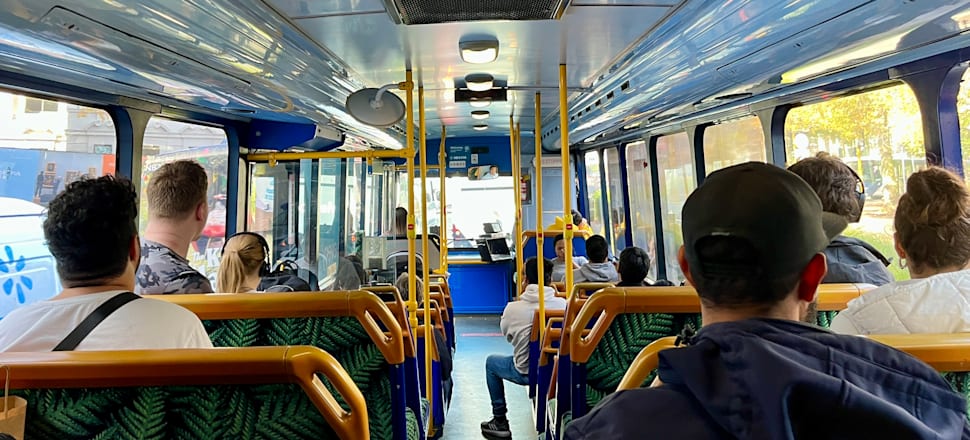
Even with bus driver shortages eased and the pandemic in the rear-view mirror, public transport usage in Auckland has stabilised at 82 percent of 2019 levels
Auckland Transport services available in hotels, HOP card vending machines and green lights for late buses.
These are all ideas on the table in Auckland Transport’s bid to drive up pandemic-hit levels of public transport use in the country’s biggest city.
READ MORE:
* Light rail the casualty in transport's political war
* Cuts and job losses at Auckland Transport across the board
The transport agency is presenting a plan to drive up public transport use to the Auckland Council today, just as National begins moves to remove half-price and free fares for some Aucklanders.
Public transport in the Auckland region has stabilised at around 82 percent of pre-pandemic use – a figure similar to many cities worldwide.
More people are using the system than before, but the average number of trips per passenger has fallen.
An Auckland Transport programme planned for the next two years hopes to drive patronage up by 25 percent and reach a monthly rate of 100 million annual boardings by the middle of next year.
The programme focuses on making public transport a more attractive solution for Aucklanders and winning back the people who haven’t used it since 2019. It aims to improve reliability, minimise disruptions, and make it easier for first-time users to jump on board.
Auckland Transport officials have said with bus driver shortages resolved and the bus network returning to normal reliability, there’s an opportunity to look at current use and customer travel behaviour.
But it will be no easy task. The end of universal half-price fares in July took a hit to patronage that was largely mitigated by a big bump in use due to the Fifa Women’s World Cup, which added 100,000 extra trips.
A National-led government, however, will remove incentives for some people to use the network.
Although coalition talks will determine what remains of National’s promised list of policies, the “back pocket boost” tax relief plan is unlikely to be something David Seymour or Winston Peters could touch.
It’s been the cornerstone of the National Party’s campaign, and Luxon and team will likely be looking at it as the source of much of their political mandate.
Within that package is a list of programmes that will get the chop to pay for the tax cuts.
Among these is the Community Connect programme, which includes half-price public transport fares for community service card holders, people aged 24 and younger, and those on total mobility services. It also includes free fares for children aged 12 and under.
The party said this "was badly designed and difficult to implement nationwide”, citing complaints from the likes of Greater Wellington Regional Council which struggled to screen passengers by age.
In Auckland, however, the AT HOP card system allows for relatively easy age-verification.
Auckland Transport applies its own discounts to fares for tertiary students, children and disabled people.
For people relying on a Community Services card to budget their commuting costs, a $2.10 bus trip will soon double in price.
Auckland Transport officials said while Community Connect had allowed for more equitable access to the public transport network. Its transport growth programme contained “additional fare specific initiatives which seek to further build on this through an independent review of the fare structure, fare capping, extension of free public transport to Under 15s and enabling employer fare subsidisation.”
Auckland Transport will also try to mitigate negative impacts of central government changes by partnering businesses and employers to encourage staff to use public transport - and through targeted pricing strategies.
There’s a small list of in-progress and funded strategies, including a system allowing late-running buses first priority at traffic lights and the first movements to a system that allows people to use their own credit or debit cards to pay.
But the transport agency has a long list of initiatives to drive up patronage over time.
Some of the most notable of these are as follow:
- An AT-managed pre-pay network in hotels aimed at tourists
- Automated voices telling standing passengers to move down the aisle of packed buses
- Park’n’Ride facilities along the Eastern Busway
- More protective safety shields for bus drivers
- More safety officers on buses and trains
- AT HOP card vending machines
- A ‘Hold My Bus’ process to prevent connections from leaving without passengers
- Directly market specific route improvements to people living within 400m of bus stops
- Promote public transport options to specific cultural or sports events or destinations
- Public live data tracking of public transport usage
- A feedback forum for bus drivers







